Tom's Hardware Verdict
The HyperX Cloud III is a good update to the Cloud II — more comfortable, better looking, similar sound profile.
Pros
- +
Very comfortable
- +
Sleek, refined, and premium-looking
- +
Fantastic bass
- +
$100
Cons
- -
Mic has some sibilance, loud mute button
- -
Virtual surround is weak
- -
Why does this software exist
Why you can trust Tom's Hardware
HyperX first launched the HyperX Cloud II eight years ago — and it’s been pretty popular since launch, which is why HyperX hasn’t launched a successor (though it has had some follow-ups, such as the Cloud II Wireless) until now.
The HyperX Cloud III is a wired, over-ear gaming headset with a detachable boom microphone, and it’s actually a worthy update to HyperX’s core lineup of Cloud headsets. The Cloud III doesn’t look too different from the Cloud II, but HyperX has dropped the contrast stitching on the headband for a more upscale (and less aggressively gamer) aesthetic. The new headset comes in an all-black colorway as well as a black and red colorway, which features red forks and red logos on the earcups.
The Cloud III is lightweight, comfortable, and has a similar sound profile to the other core Cloud headsets, such as the Cloud II Wireless and the Cloud Alpha — which was our top pick for best gaming headset until it was dethroned by the SteelSeries Arctis Nova Pro a year ago. Perhaps the most appealing thing about the Cloud III is its $99.99 price point, which is very budget-friendly given its build and sound quality.
Design and Comfort of the Cloud III
The HyperX Cloud III is a wired, closed back, over-ear headset with a detachable boom microphone. The Cloud III retains the general aesthetic of its predecessor, the Cloud II (and HyperX’s entire Cloud lineup), but it’s definitely been refined and it has a sleeker, more premium look — though it comes in the standard HyperX launch colorways of black and black/red (our review unit was black).

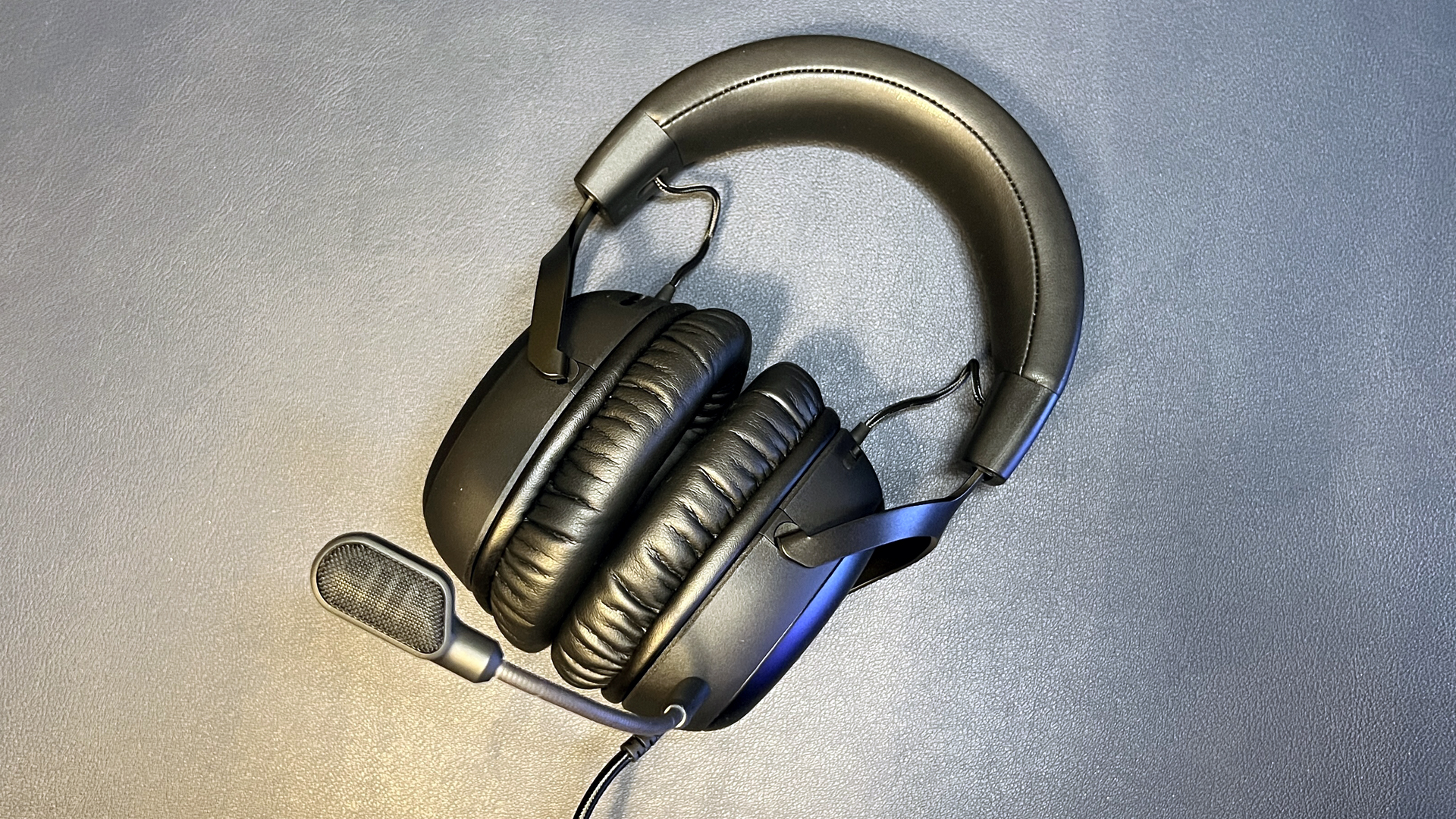

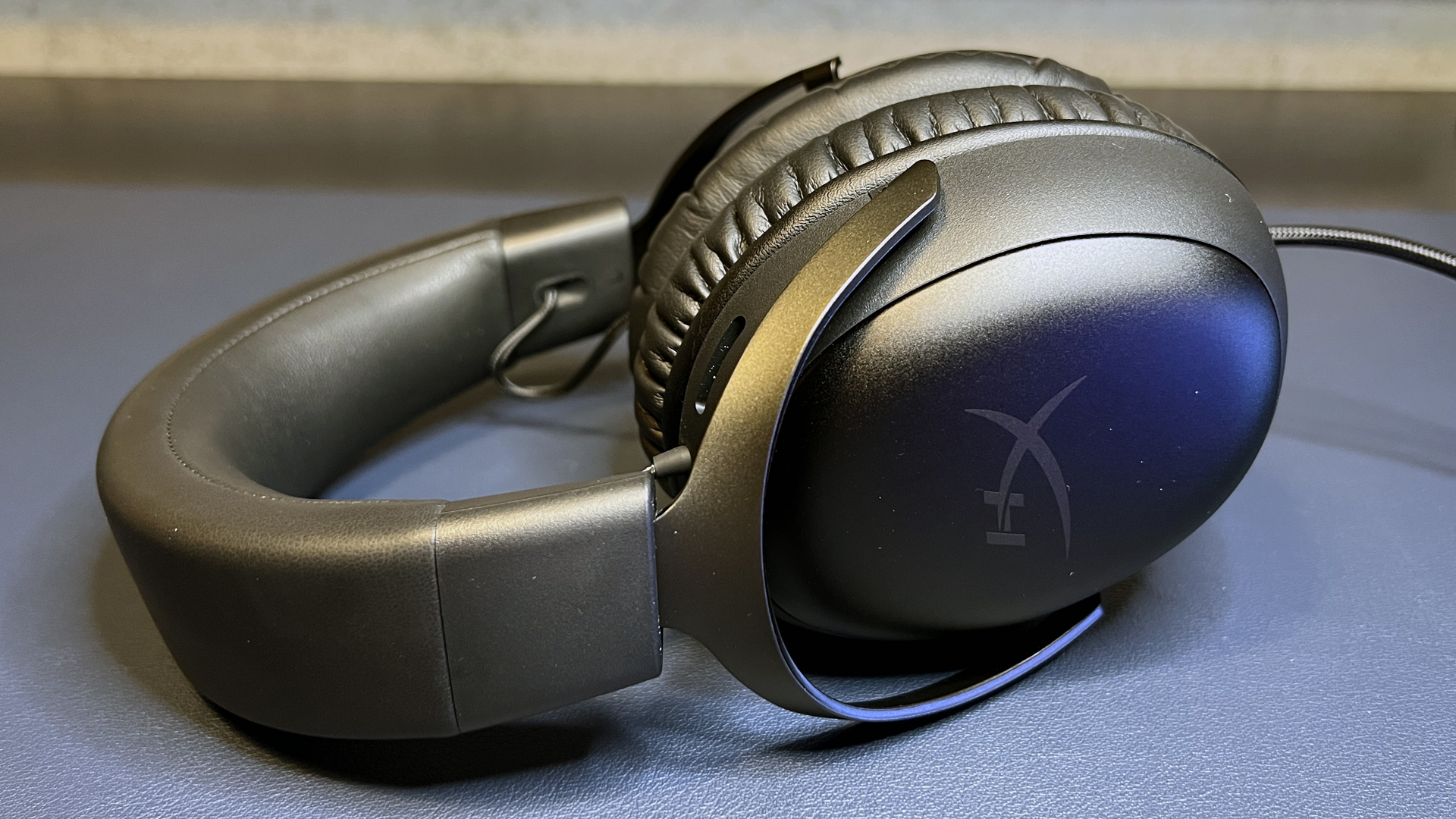

The Cloud III has a steel headband with aluminum forks that curve toward the earcups, and a padded leatherette headband with single-piece plastic buckles. The headband still sports a debossed HyperX text logo along the top, but doesn’t have the bright contrast stitching of the Cloud II (or the Cloud II Wireless, or the Cloud Alpha).
The Cloud III’s earcups aren’t significantly smaller than those of the Cloud II, but they’re a bit more contoured and slightly angled for fit. HyperX’s “HX” logo is still on each earcup, but is smaller and more subtle on the black colorway — printed in dark gunmetal gray rather than bright silver. Don’t worry, if you want a more eye-catching headset; the black/red colorway features bright red aluminum forks and red HX logos on the earcups.
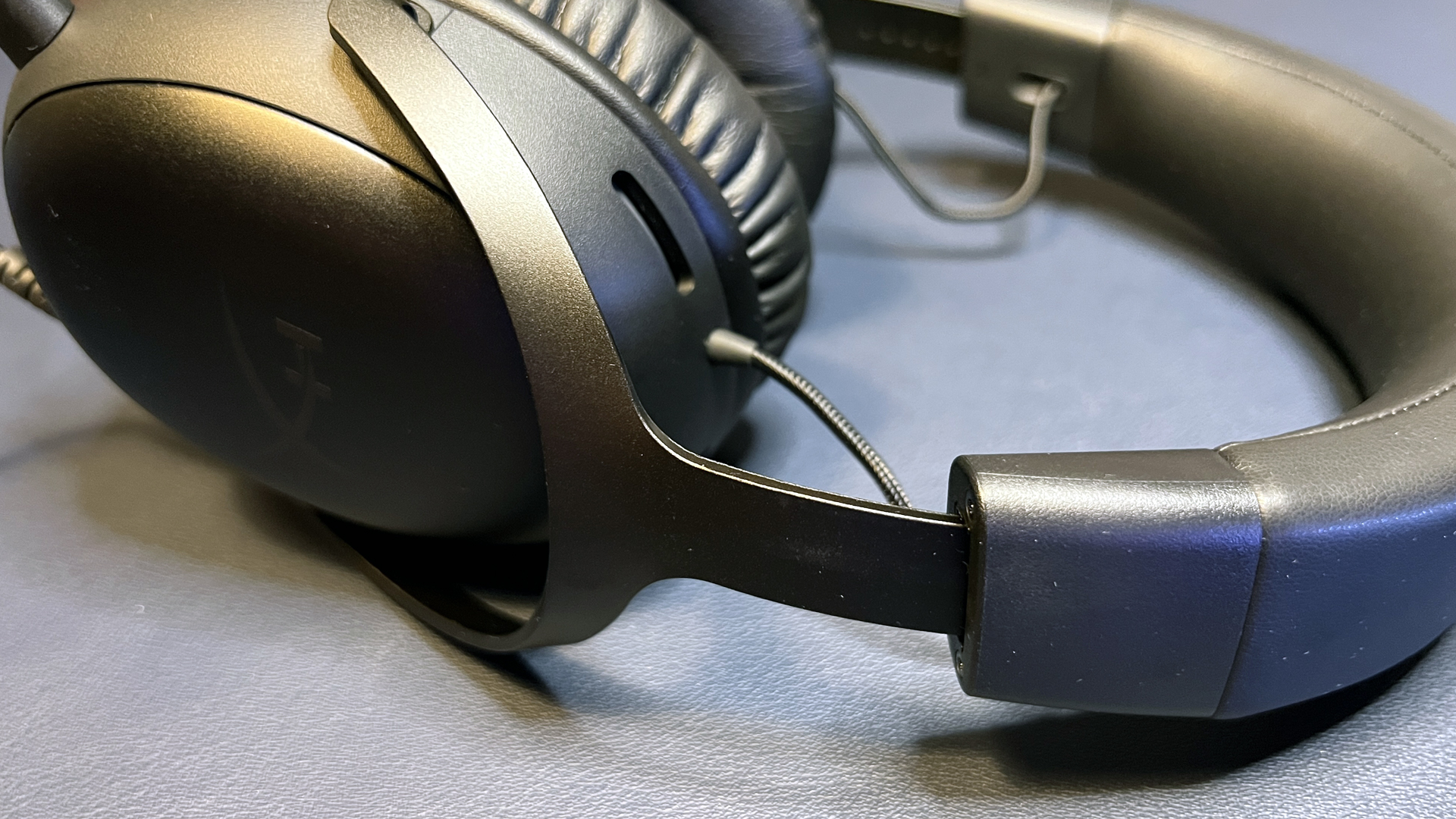


HyperX claims the Cloud III delivers “unmatched comfort,” which is a bold claim but one that’s not entirely unwarranted — the Cloud III is extremely comfortable. It’s on the lighter side of average for a gaming headset, weighing 10.86oz (308g) including the cord (but without the boom mic, which adds 0.42oz/12g).
Get Tom's Hardware's best news and in-depth reviews, straight to your inbox.
This is about the same as the Razer BlackShark V2 Pro (2023), which weighs 11.29oz (320g), a little over half an ounce lighter than the SteelSeries Arctis Nova Pro, which weighs 11.96oz (339g), and heavier than the Logitech G735, which weighs 9.6oz (273g). It’s on par with the other headsets in HyperX’s Cloud lineup, however, which is a little curious, as the Cloud III is wired and doesn’t have a battery. But the HyperX Cloud II Wireless is actually lighter — 10.9oz (309g) with the mic attached; the HyperX Cloud Alpha Wireless is slightly heavier at 11.81oz (335g) with the mic attached, but it also boasts a 300-hour battery life.
The Cloud III’s weight isn’t an issue when it comes to comfort, though. The headset somehow has the perfect clamping force — relatively low but just high enough to keep the headset from falling off if you tilt your head back. Its clamping force feels slightly stronger than the Arctis Nova Pro’s and the G735’s — both of which are extremely comfortable and also fall off my head when I look up about 65% of the time.
The Cloud III also has plush leatherette-covered memory foam earpads, which are slightly larger and thicker than its predecessor’s and feel great. This is definitely one of those headsets that’s easy to forget you’re wearing. The memory foam is soft enough that it won’t bother glasses-wearers, either.
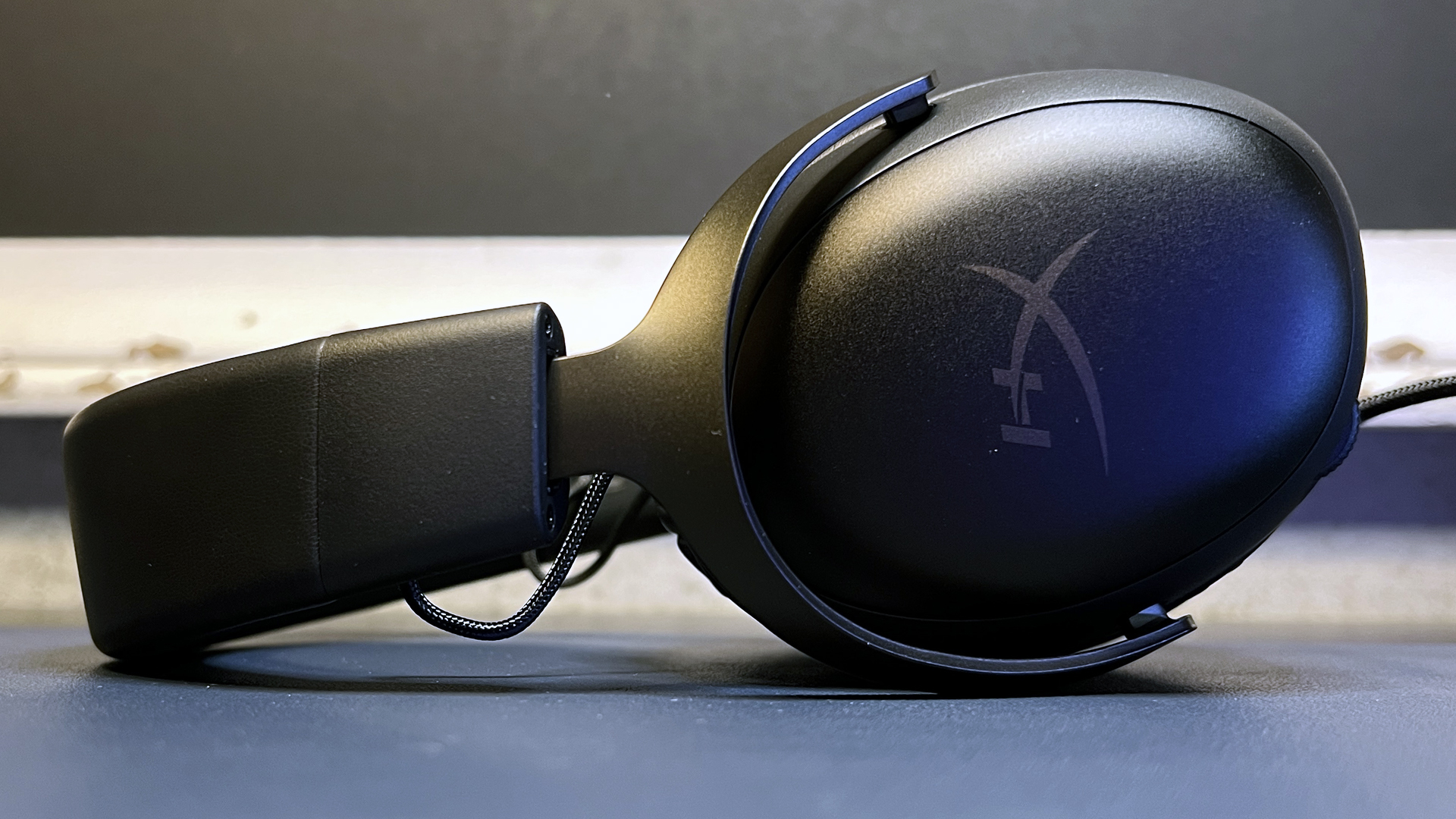

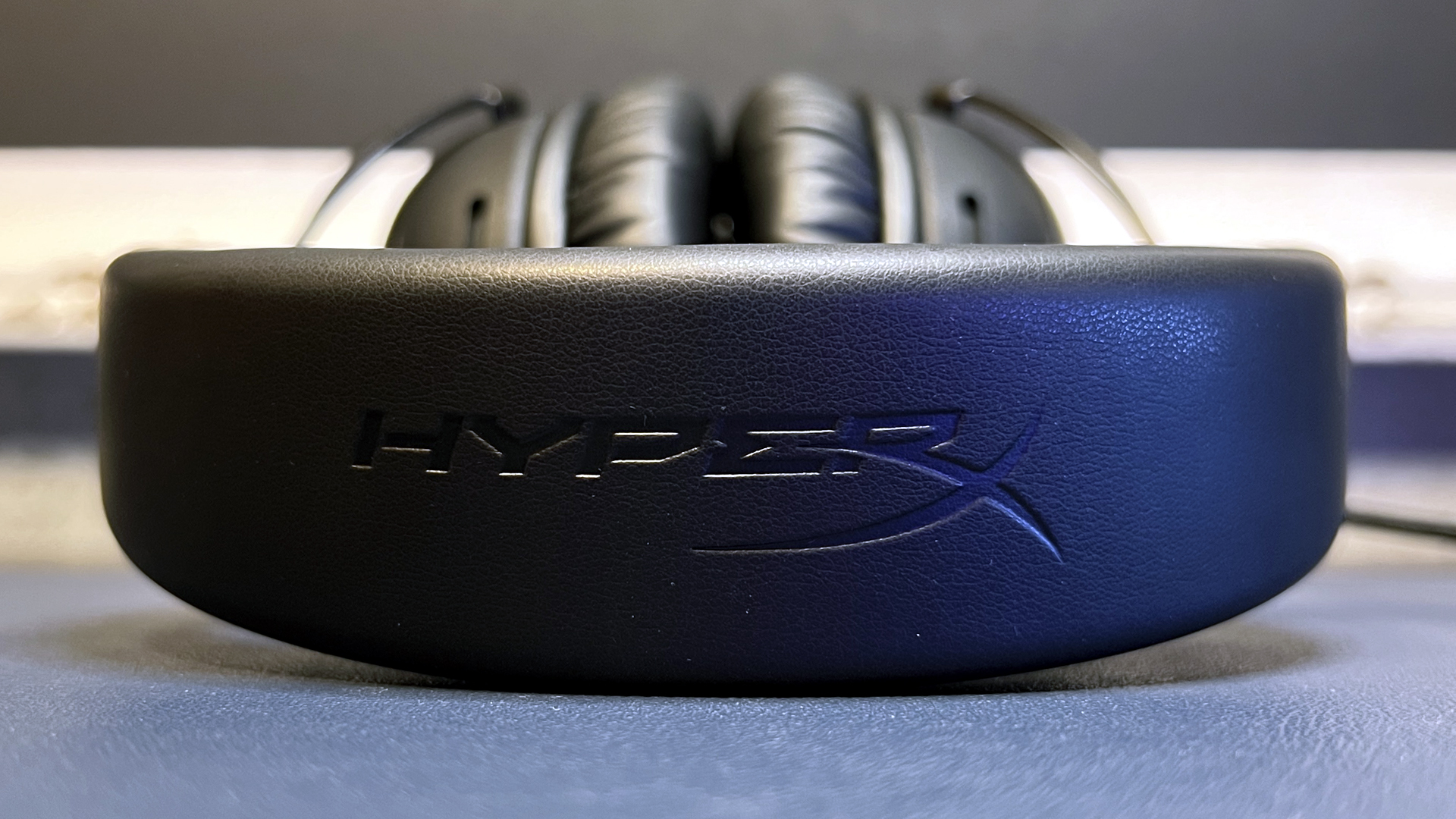

The Cloud III is relatively adjustable: the earcups tilt and are independently height-adjustable; they don’t pivot but the forks allow for some lateral movement and the headband is very flexible. The earcups’ height adjustment is notched, with nine steps, and each earcup can extend an extra 1.5 inches (38mm). The headband is also leatherette-covered and padded with memory foam. The leatherette looks and feels very premium, and the headset definitely looks like it costs more than $100.


The headset has two on-ear controls — a volume wheel on the right earcup, and a microphone mute button on the left earcup (which also houses the 3.5mm mic port). The volume wheel is just a volume wheel — smooth, un-clickable, The mute button is small but easy to press (and find, as it’s the only button), and there’s a red mute indicator LED located on the microphone itself. It’s relatively bright, but it could be slightly brighter for when the microphone is positioned at the edge of your vision. I like this feature a lot: it’s one of the more useful ways to indicate mute status, in my opinion, although my favorite is a physical flip-to-mute (most recently seen in the Turtle Beach Stealth Pro).


The Cloud III has a four-foot (1.2m) non-detachable analog cable with a 4-pole 3.5mm headset jack, as well as a 4.27-foot (1.3m) USB-C dongle cable. The dongle has a 3.5mm port for the headset’s analog jack, (as well as a USB-C to USB-A adapter), which you can plug the headset’s analog jack into for a total cord length of 8.25 feet (2.5m). The Cloud II’s accessories include a mesh carrying bag and velour replacement earpads; the Cloud III doesn’t come with either of these, which is too bad — while I prefer leatherette to velour earpads for passive noise cancellation, it’s always nice to have options.
Specs
| Impedance | 64Ω |
| Frequency Response | 10 Hz - 21,000 Hz |
| Design Style | Over-ear (circumaural), closed back |
| Microphone Type | Uni-directional, noise-canceling |
| Connectivity | Wired (analog), wired (USB) |
| Weight | 10.86oz / 308g (without mic); 11.29oz / 320g (with mic) |
| Cord Length | 4ft / 1.2m (analog); 5ft / 1.5m (USB dongle) |
| Battery Life | N/A |
| Lighting | None |
| Software | HyperX NGENUITY |
| MSRP / Price at Time of Review | $99.99 / $99.99 |
| Release Date | May 30, 2023 |
Audio Performance of the Cloud III
At a glance, the Cloud III’s specs do not look wildly different from the Cloud II’s. Like the Cloud II, the Cloud III sports 53mm dynamic drivers, which are slightly larger than most of the competition (40 - 50mm) but still only around half the size of Audeze’s planar magnetic drivers in the Audeze LCD-GX and the Audeze Maxwell, as well as HyperX’s own Cloud Orbit S. They’re not the same drivers found in the Cloud II — HyperX says the Cloud III’s drivers have been redesigned to deliver “accurate, smooth, and detailed sound by directing audio into the ears at a more optimal position.”

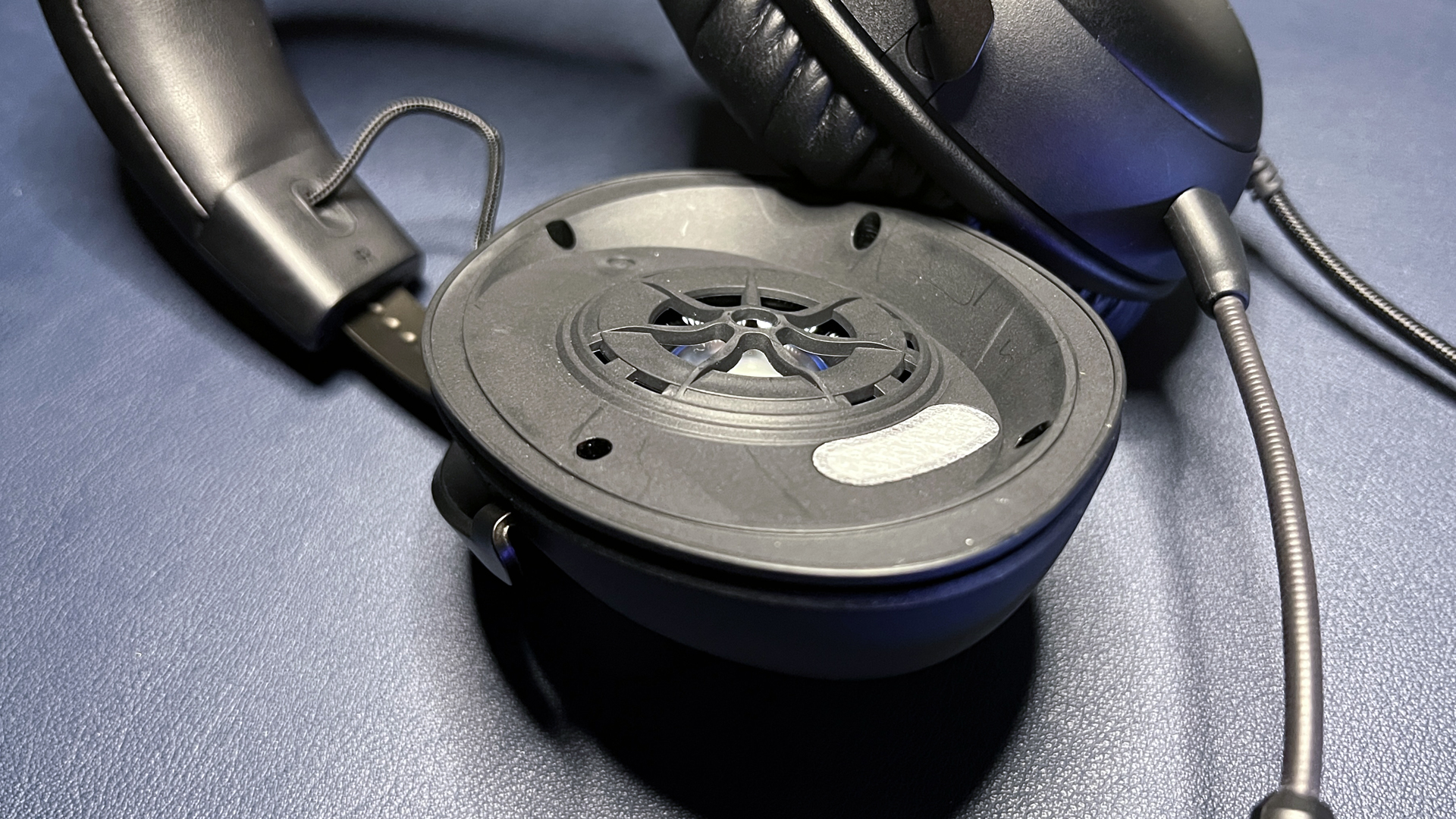
The Cloud III’s re-engineered drivers have a frequency response range of 10 - 21,000 Hz — slightly wider than the average gaming headset (20 - 20,000 Hz), but slightly narrower than the Cloud II (10 - 23,000 Hz). (Frequency response is only one aspect of audio; a wider frequency response range isn’t automatically better.) I can tell these are redesigned drivers (versus brand-new), as the Cloud III has a similar — refined, but similar — sound profile to the Cloud II Wireless (which has a refined-but-similar sound profile to the wired Cloud II).
The Cloud III has an excellent bass response, which is deep and powerful, and can be felt even in the lower ranges where it can’t be heard. The kick drum at the beginning of Lorde’s Royals wasn’t as detailed on the Cloud III as it was on higher-end headsets, but the synth bass was present and clean.
The headset’s mids are slightly restrained — enough to be noticeable in Enya’s Orinoco Flow, but not so much in songs that stick closer to the midrange, such as K-391’s Lonely World. Highs, on the other hand, are slightly turned up — the high-pitched strings at the beginning of Britney Spears’ Toxic were at the cusp of being painfully bright.
Overall, the Cloud III’s sound profile was more balanced than you might expect (given the powerful bass). Listening to music on this headset was pleasant, but it’s not a headset I would grab for that purpose — the soundstage was a little narrow and the dynamics were disappointing compared to more audiophile-leaning headsets, such as the Audeze Maxwell.


Gaming on the Cloud III sounded quite good, though the DTS surround sound was either so subtle as to make no difference — or just not working. Directional sound was still pretty good, but it wasn’t quite the virtual surround sound experience I was expecting. The headset offered plenty of well-layered detail in games like Subnautica: Below Zero and Uncharted 4. The headset is compatible with Sony’s PlayStation and Nintendo’s Switch via USB (it’s compatible with Microsoft’s Xbox via analog only). I plugged it into my PlayStation 5 and fired up God of War: Ragnarok (a game I’m playing through very slowly via headset reviews), and the headset’s detail didn’t disappoint. It wasn’t quite as immersive with its narrower soundstage, but the excellent fit and lack of sound leakage helped a lot.
Microphone of the Cloud III
The Cloud III has a detachable 10mm boom microphone, which HyperX claims has improved clarity over the Cloud II’s 6mm boom microphone. The Cloud III’s microphone features a condenser capsule with a unidirectional polar pattern, built-in noise-canceling, and an internal mesh pop filter. It sits at the end of a flexible three-inch (76.2mm) gooseneck arm, which feels very well-made and sturdy. Just to the left of the microphone is a red mute indicator LED that lights up when the mic is muted from the headset.


The Cloud III’s microphone sounds... fine. Yep, that’s it — just fine. My voice sounded full enough - though definitely not broadcast quality — and the microphone’s noise-canceling did a decent job of removing background noise (I have several very loud PC case fans) without distorting or thinning out my voice. The microphone has a relatively low recording volume — an issue we also saw with the Cloud II Wireless). It wasn’t too bad, but it was definitely on the softer side, even with the input gain dialed up to the max.
Moving the microphone closer to my mouth helped with the low recording volume, but made my speaking voice sound fuzzy (understandably; the mic was way too close). Luckily the built-in pop filter did a pretty good job of keeping the plosives at bay — even when I was far, far too close to the mic. The mic did pick up some sibilance at any distance, however, and I was also getting some surprisingly loud blips when I pressed the mute button. Because the mute button is a physical button, it’s normal to hear something, but these were unusually loud (especially considering the mic’s low recording volume).
When I asked my colleagues how I sounded on the Cloud III, they couldn’t tell I’d switched headsets (to be fair, I switch headsets with alarming frequency, and my colleagues are almost certainly sick of my asking how I sound every single day). They said I sounded “About the same? Probably?” — which is better than saying I sounded terrible, I suppose. The Cloud III’s microphone isn’t that bad, it’s just not that good, either. No headset microphone will make you sound as good as one of the best standalone gaming microphones, but the Razer BlackShark V2 Pro (2023) comes pretty close.
Features and Software of the Cloud III
The Cloud III “works” with HyperX’s universal peripheral software NGENUITY, which is — shockingly — kind of a mess. It had trouble detecting the Cloud III about 50% of the time — it’s possible this is a pre-release bug, but I’m not confident that’s the case as I’ve had issues with NGENUITY detecting peripherals before.
Once you get NGENUITY to recognize the headset, you can change a handful of settings — many of which seem to do virtually nothing. (If all of them do virtually nothing, however, that means NGENUITY hasn’t really recognized the headset and you’ll need to unplug it or restart NGENUITY or find a new computer or something.) At the moment there are only two settings that seem to really make a difference, and those are the volume slider and the microphone slider. The volume slider is largely unnecessary as it controls system volume; the microphone slider controls input gain, which ranges from “unintelligible whisper” to “still a little quiet.”
There’s a toggle for mic monitoring, DTS Spatial Sound, and the equalizer, but none of these features appear to work as of this writing. I spent far too long toggling the Spatial Sound and EQ while straining to hear even the subtlest of differences, and I can confidently say that they’re just...not there. I’m not sure if this is a pre-release issue that will be fixed at launch, or if it’s something with my test unit/my PC (though I did try it on multiple PCs, including one stripped of other peripheral software, just in case, and nothing worked), or if it’s something that HyperX will fix in the future.
Bottom Line
HyperX has spent eight years riding on the success of its Cloud II headset, and the Cloud III is an excellent update — it retains most of the features people love about the Cloud II while improving build quality, comfort, and audio (somewhat). Its sound profile is relatively balanced, but has some issues in the higher mids and highs (the Cloud II had some very inconsistent highs, however, so the Cloud III has definitely improved, here). It also has a new microphone, which has some quirks but is fine for chatting with friends and teammates.
The Cloud III is one of the most comfortable headsets I’ve worn — I quickly forgot I was wearing it. And it looks and feels like it costs a lot more than its $99.99 asking price, with its premium leatherette padded earcups and aluminum forks. It’s not the cheapest headset on the market, but it’s definitely one of the best deals — SteelSeries’ Arctis Nova 1 and Razer’s BlackShark V2 X both retail for $59.99, and do not look anywhere near as high-end as the Cloud III.

Sarah Jacobsson Purewal is a senior editor at Tom's Hardware covering peripherals, software, and custom builds. You can find more of her work in PCWorld, Macworld, TechHive, CNET, Gizmodo, Tom's Guide, PC Gamer, Men's Health, Men's Fitness, SHAPE, Cosmopolitan, and just about everywhere else.



